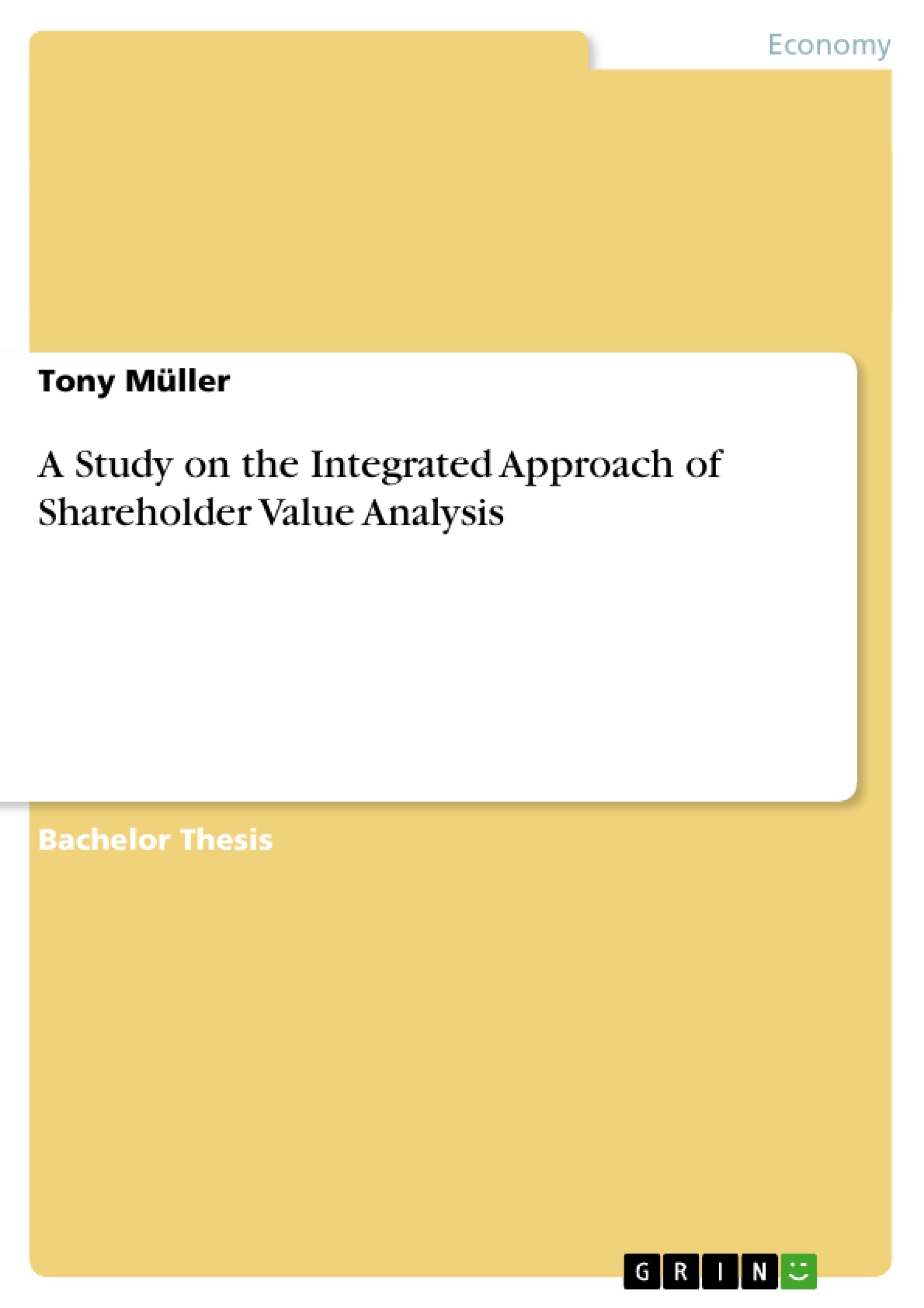Ramanathan, Managing for Shareholder Value--Readings. Study Chapter 3 “Shareholder Value Approach,” in Alfred Rappaport. Jai maa vaishno devi movie. Estimates of key value drivers for the Boeing Company (or the company of. The seven value drivers are: sales growth operating margin taxation inc investment in fixed assets inc investment in working capital planning horizon cost of capital (usually WACC).
Preparation, Performance, Output and Grading SCHEDULE The emphasis of this course is primarily on integrating within a shareholder value framework what you have already learnt in other courses. The course will be delivered in 10 sessions. The first eight sessions will be held on May 10 and 11, from 8:30 am to 4.30 pm, with appropriate breaks. The final two sessions will be held on June 1, from 8.30 am to 12.30 pm. Given the format of the course, it is extremely important that you prepare ahead for the sessions. GROUPS The groups will be formed during the first day of classes (or earlier).

FINAL PRESENTATION You should come prepared to present your analyses in every session. June 1 sessions will be devoted largely to group presentations. WRITTEN REPORT Each group will E-submit a written report, and also provide a hard copy. The report may consist simply of a set of transparencies that are self-explanatory, along with an executive summary. GRADING Your performance will be evaluated on the basis of your class contributions and team-based contributions. I shall seek team inputs regarding each member’s team-based contribution. Text materials (available in Balmer Copycenter) Optional K.
Ramanathan, Accounting and Managing for Shareholder Value Creation. Ramanathan, Managing for Shareholder Value--Readings and Cases. Ramanathan, Managing for Shareholder Value— Handouts. Ramanathan, © 1988-1999 Shareholder Value Computation—E-Model. Text materials (available on internet) Required A. Damodaran, Value Creation and Enhancement: Back to the Future. The article can be accessed at: Illustrative Internet sites for corporate financial data Assignments Sessions 1 # 2 Topic: THE ROE FRAMEWORK FOR MEASURING AND MANAGING VALUE CREATION Objectives: Learn how businesses use financial models to measure and plan value creation in business.
Enhance your understanding of the ‘ language of business’ used in financial statements. Explore the Internet to track your company’s financial and management information. Learn the usefulness of ROE (Return on Equity), ROA (Return on Assets), RONA (Return on Net Assets), and EP (Economic Profits) as integrated frameworks to direct and evaluate business performance. Understand the limitations of ROE, ROA, RONA, and EP measures. Learn to differentiate between profits and cash flows, and between book values and market values.
Learn how to use published reports to analyze a company's management policies and business performance. Preparation Guide: Access The Boeing Company financial statements from the Internet K. Ramanathan, Accounting and Managing for Shareholder Value Creation. Study Chapters 1,2, and 3: Refer to Glossary as needed. Assignment (See green booklet, Readings and Cases): Use the worksheet labeled “Balance Sheet Changes” and compute key changes in the company’s financial position for the most recent two years. Evaluate the change data.
Use the Financial Ratios Worksheet to calculate financial ratios for the most recent two years. Enter your results in the accompanying ROE Scoreboard worksheet. Evaluate the firm’s financial performance. Could the firm’s performance during the most recent year have been better? What specific improvements would you suggest? Using data for the most recent two years, analyze key financial changes at the corporate and segment levels.